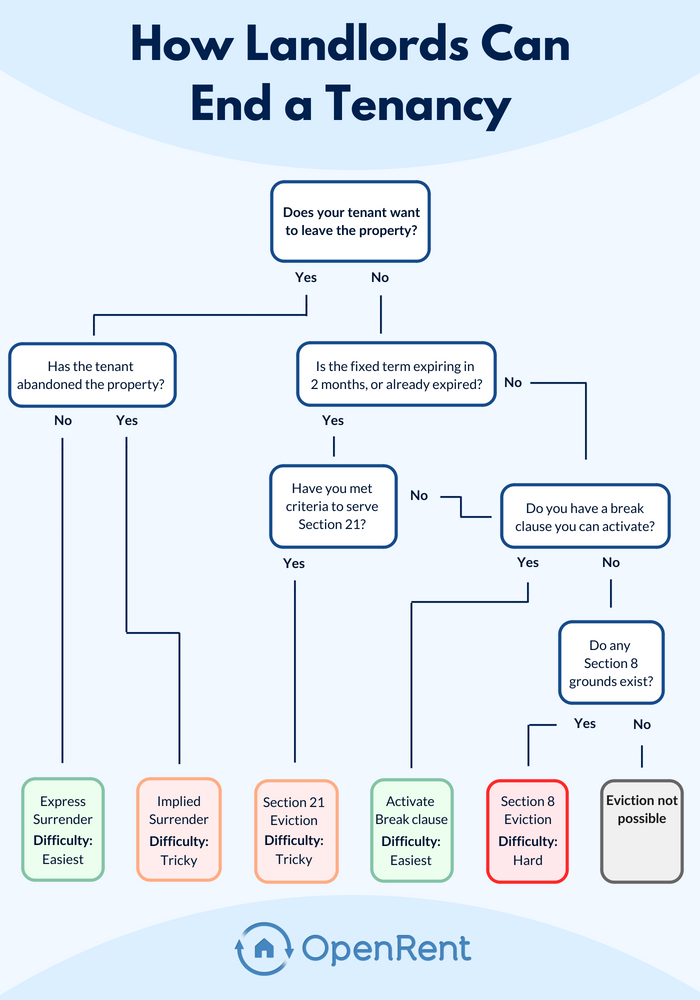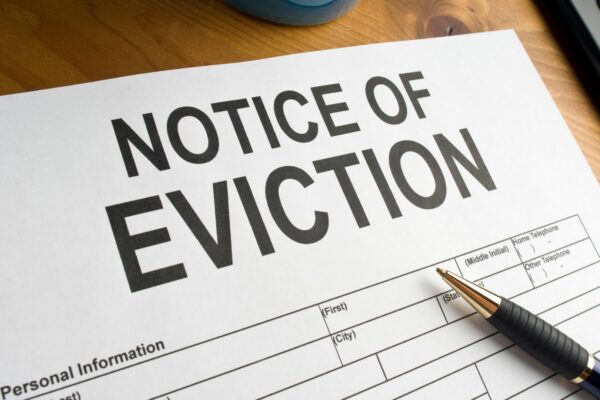Landlords have several options when ending a tenancy, but the best options, if possible, is always to come to an agreement with the tenant.
This flowchart decision tree tells landlords all the ways they can end a tenancy!

If a tenant wants to leave the property, then landlords can arrange a mutual surrender. Express surrender is when this is agreed in a written deed. Implied surrender is when both parties’ actions show mutual agreement exists about the tenancy being over.
For example, if the tenant abandons the property and then stops paying rent, and the landlord meanwhile lets the property to new tenants, then a judge might find an implied surrender of the tenancy.
If the tenant doesn’t wish to leave, then the landlord must evict them or activate a break clause. If there’s no break clause, eviction can happen through through section 21 or section 8 eviction notices.
If neither notice is possible to serve, then eviction is not possible, and the landlord must wait until it is possible to serve an eviction notice.




Start the discussion at community.openrent.co.uk